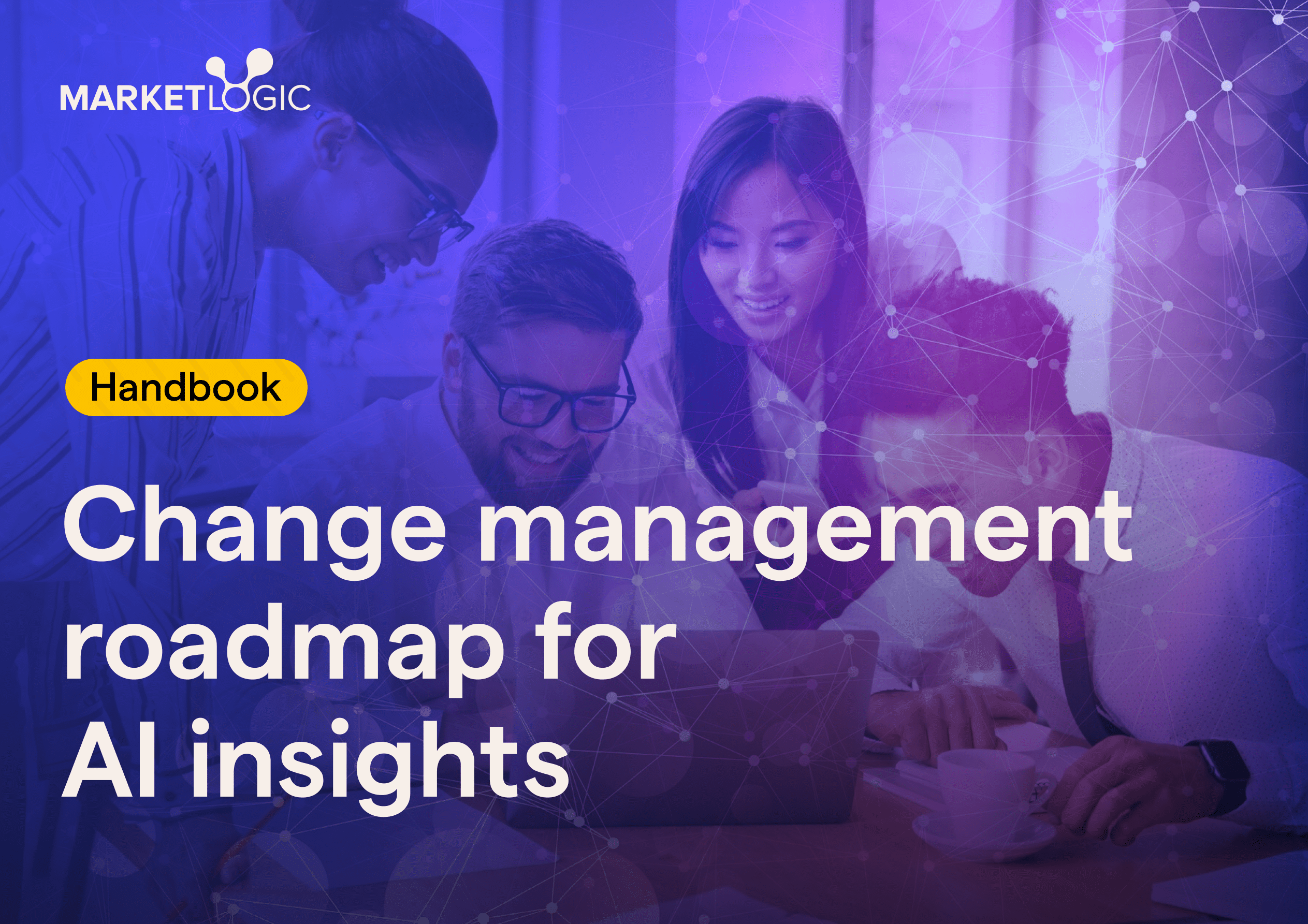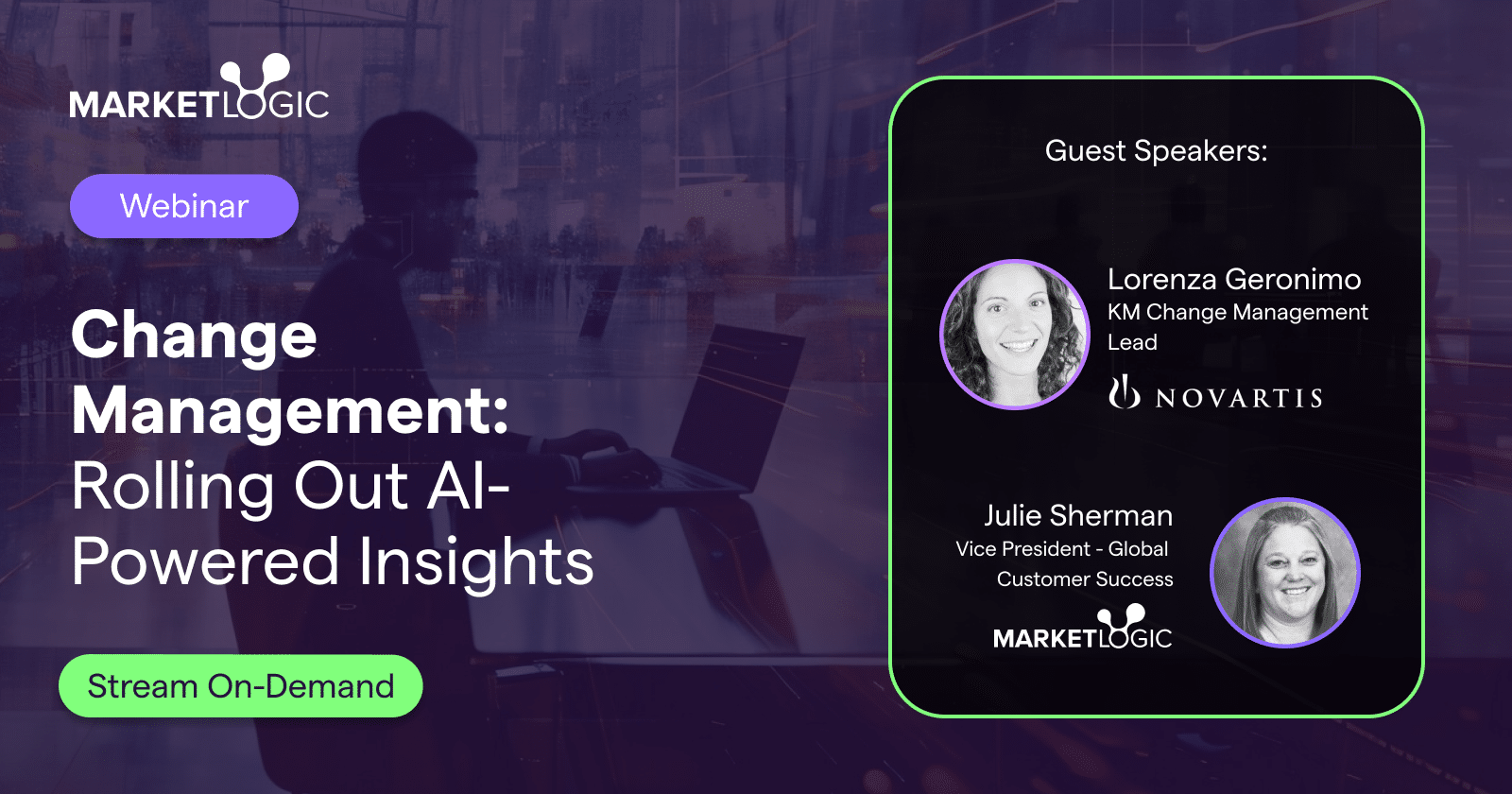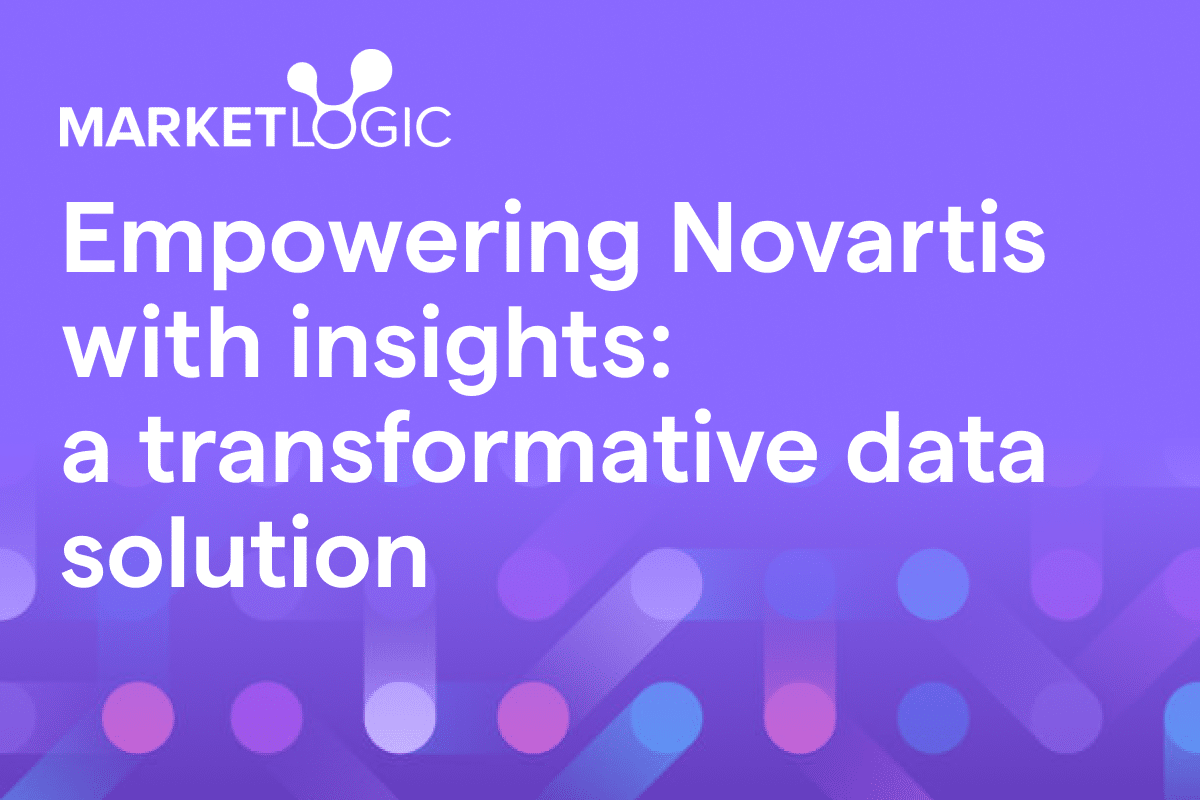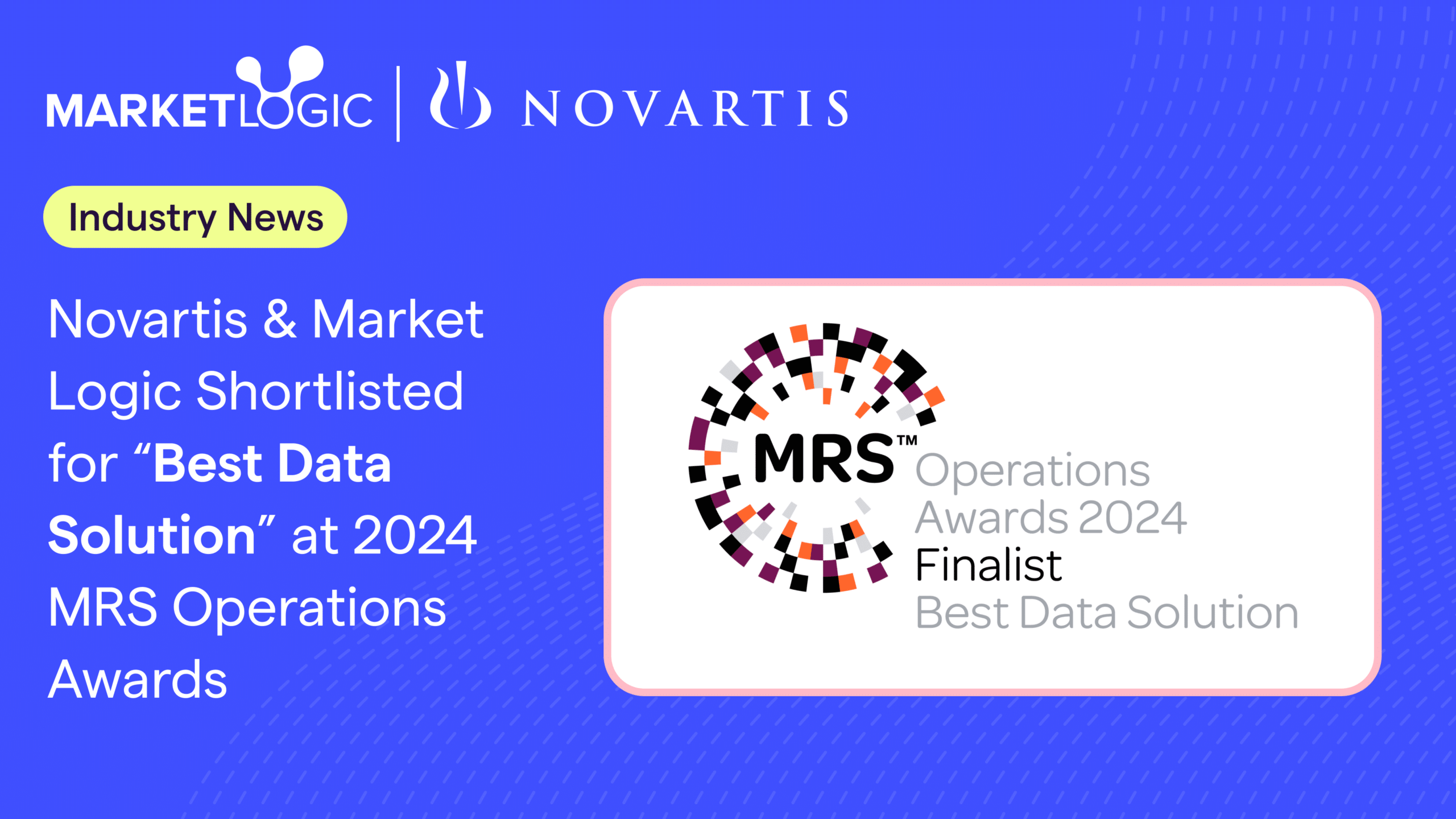Get a playbook for scaling gen AI across a global organization by international Pharma company Novartis. Learn how they nailed their change management strategy for implementing gen AI-powered insights — going from pilot to 10,000+ users, saving millions in research spend, and building trust at every level. We’ve highlighted key takeaways from our recent co-hosted webinar below.
Scale your AI-powered knowledge management with this proven approach
Despite all the AI hype, a simple launch of a new generative (gen) AI solution isn’t quite enough in the knowledge management space. To get real value, teams must trust your AI, adopt it, and use it — every day.
But for that kind of success, you need a proven enterprise-level change management strategy that is not only relevant to knowledge management but also tried and tested in an organization like yours — and backed by strong results.
Change management: rolling out AI-powered insights gives you just that. It’s an example-packed webinar hosted by two leaders on the frontlines of gen-AI change management work in the knowledge management sphere — Julie Sherman, Vice President of Global Customer Success at Market Logic Software, and Lorenza Geronimo, Knowledge Management Change Lead at Novartis.
Below, you’ll find a recap of the webinar and some of the key takeaways from the session, although we also encourage you to watch the full webinar recording. And if you want to dive a little deeper, download your copy of the AI change management roadmap: Your blueprint for growth featuring best practices from Market Logic’s change management experts.
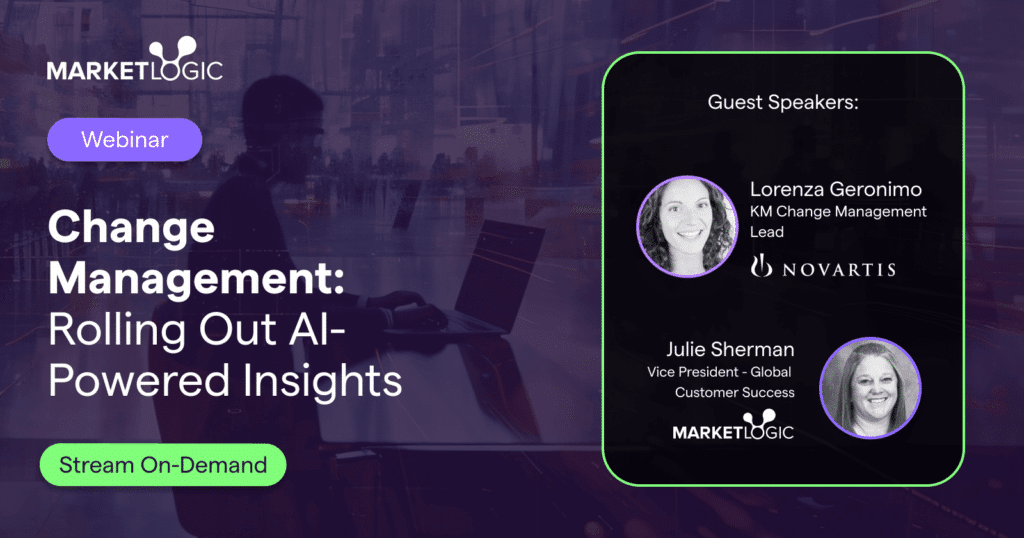
The problem: Insights aren’t reaching decision-makers
Market Logic’s Julie Sherman opened the session with a challenge that will sound familiar to many insights professionals: decisions are being made without insights, not because insights aren’t available, but because they’re too hard to access in the moment they’re needed.
A study by Market Logic found that many marketing and product decisions are still based on gut or old habits, not data. It’s not a matter of bad research, but of broken connections. The data exists, but it’s scattered, siloed, and slow to reach the people who need it most.
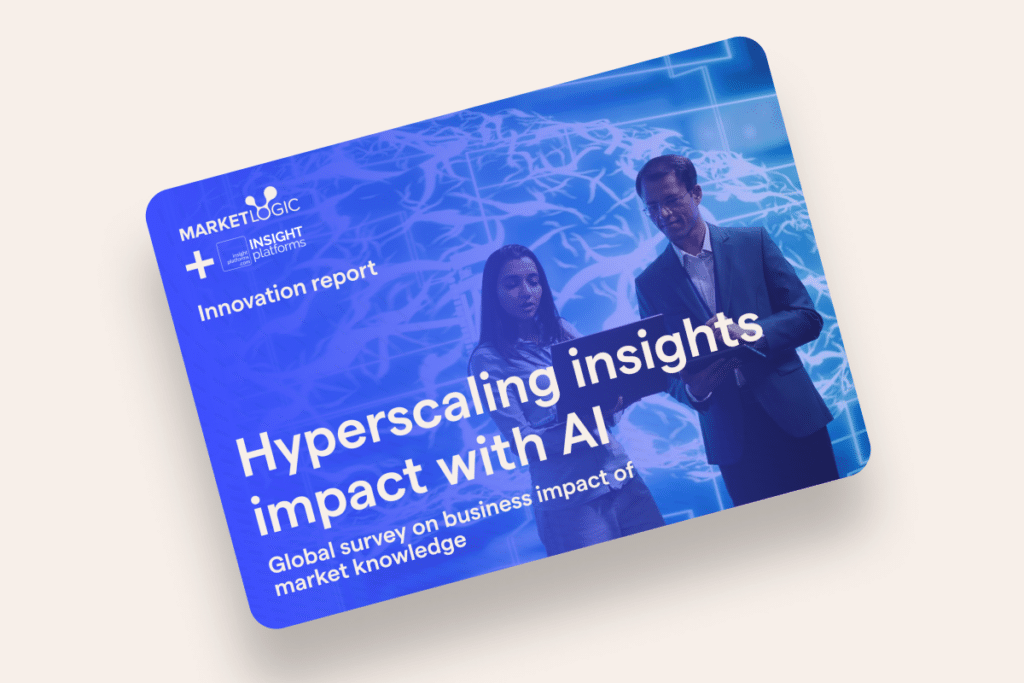
This is the gap Market Logic’s product, DeepSightsTM, was designed to fill. It’s a generative AI-powered platform that delivers insights through natural language search, embedded directly into workplace tools like Slack, Teams, and Google Chat. But as Sherman made clear, change management is critical to the success of the tool.
To actually see impact,” she said, “you need a change management process that accelerates adoption and helps people trust the tools they’ve been given. Change management brings AI adoption to life
From awareness to adoption: Market Logic’s three-phase DeepSights rollout model
Market Logic has developed a structured, but flexible approach to supporting AI-powered change. It’s grounded in three distinct phases: creating awareness and excitement, building capability, and ultimately, sustaining adoption.
- In the early phase, the goal is simple: get people talking. That means making the launch visible, involving leadership, and aligning the tool with the organization’s identity. Some companies brand the tool internally — like Novartis did with DeepSights-powered insights platform, “Sherlock.” Market Logic clients have used digital signage, internal TV screens, and endorsement from senior leaders to position gen AI not just as another tool, but as a strategic asset.
You want people to know the tool is coming, get excited, and understand how it’s going to help their team drive more impact.
Julie Sherman, Vice President of Customer Success, Market Logic Software
2. Once there is awareness around DeepSights, the mid-phase shifts to capability building. Market Logic’s approach is pragmatic — training sessions can be as short as 15 minutes, but they’re carefully designed around users’ real problems and workflows. It’s not about generic functionality; it’s about showing how DeepSights can help you do your job better.

3. Finally, in the late phase, the focus turns to sustained engagement. That’s where building your network of champions comes in — these are power users across departments and regions who help train others, answer questions, and keep momentum going.
Sherman shared a story about a user who, during a live meeting, received an unexpected question about a consumer trend in a region they had not prepared for. Using DeepSights, they were able to generate a trusted, instant answer in real time — keeping the conversation moving and demonstrating the increased reliability of the insights team.
What Novartis did differently in change management — and why it worked
For us, adoption means that our people are using Sherlock and DeepSights in their day-to-day jobs to find and apply knowledge.
Lorenza Geronimo, Knowledge Management Change Lead, Novartis
If Market Logic brought the technology and support, Novartis brought a dedicated change management expert and the field-tested results. The journey began in 2020, but after fully activating DeepSights in July 2024, usage skyrocketed. Today, over 10,000 users across the company rely on the platform to access knowledge and insights.
Lorenza Geronimo walked through what made her team’s rollout successful. Novartis’s internal change management team didn’t just launch DeepSights and hope for the best. They ran a full adoption campaign with real marketing tactics — a launch video, internal social posts, champions networks, live demos, behavior science, and success stories.

Below, we summarize the key best practices in three key areas and expert tips:
1.Tailor your success stories (backed by concrete numbers) to every team in your organization
It started with understanding their users in depth. The Novartis team developed detailed user personas that helped them tailor training, communications, and messaging around each group’s unique goals and pain points.
They also made sure to connect the tool’s benefits directly to business priorities. For marketers, the focus was on getting answers fast — they needed to hear about the speed with which they could self-serve answers to insights questions across platforms. For insight teams, the key message was about efficiency — their priority being delivering comprehensive reports to the business based on research questions, in weeks instead of months. For leadership, it was about ROI — and enabling faster, more informed decisions and saving money on market research spend.
Crucially, Geronimo and her team backed up their claims with numbers. In one case, Novartis was facing a blister-versus-bottle packaging decision for a drug, a decision that could impact major manufacturing investments. One team used traditional external research — costing them about $100K and three months for a sample size of 50 patients. A different team used Sherlock and DeepSights to conduct desk research that resulted in a sample size of 6,000 patients. It was free, took only three weeks, and produced better data.
In another example, one team saved tens of millions after rolling out the tool; the team that didn’t roll out the tool actually saw spending increase.
Those kinds of stories didn’t just build credibility in Sherlock and DeepSights — they created momentum.

2. Apply and test behavioral science principles to drive AI insights adoption
One of the most fascinating parts of the webinar was how Geronimo and her team applied behavioral science to drive Sherlock and DeepSights’s adoption. They developed their communications based on two psychological principles:
- The authority principle: People are more likely to adopt a solution if it’s promoted by a recognized leader.
- The availability bias: People are more receptive to change when reminded of the challenges they faced before the solution was introduced.
Then they tested the effectiveness of the launch campaigns based on those principles.
Here’s what happened: After testing both approaches, they discovered that the authority principle was far more effective for the Novartis audience when it came to adopting the tool. For example, when messages about DeepSights came from respected leaders in the business, people were much more likely to pay attention and try the tool.
In contrast, the availability bias approach — which reminded users of their past frustrations with accessing knowledge — was less impactful. For this audience, the credibility and endorsement from leadership proved to be the stronger motivator for change.
They also discovered that email, far from being dead, was their most effective channel to drive traffic and logins to Sherlock and DeepSights — especially when those emails were sent by leadership advocating for the platform. And live demos, featuring real people using DeepSights in their actual roles, helped bring the tool to life and made its value feel tangible.
3. Tackle resistance head-on: Bring key stakeholders along for the journey
Of course, not everyone welcomes AI with open arms. Some stakeholders were concerned that gen AI tools might replace jobs or act in unpredictable ways. Novartis responded with transparency, education, and partnership.
They invested in demystifying gen AI, showing how DeepSights had clear, targeted use cases tied to employees’ real, everyday knowledge problems; it wasn’t just “AI for the sake of AI.” They brought legal, compliance, ethics, and procurement teams into the process early — addressing concerns directly and building confidence with DeepSights’s safeguards like source referencing, watch-outs, and built-in validation loops.
Over time, these same teams became ambassadors, and DeepSights is now the gold standard for gen AI at Novartis. As other AI tools (not necessarily for insights) are proposed in the company, legal now refers other teams to Sherlock and DeepSights as a model for safe, trustworthy AI. Procurement even added a clause to vendor contracts requiring externally commissioned research to be uploaded into Sherlock and refers teams to Sherlock and DeepSights before commissioning new research.
“When we talk to legal we highlight the compliance at scale, and now when [legal] goes to talk to other teams in Novartis who are trying to implement AI based solutions, DeepSights is now the gold standard.”
— Lorenza Geronimo, Knowledge Management Change Lead, Novartis
Key change management takeaways: Tailor your communication, test and learn, and quantify concrete business impact
The recurring themes throughout the webinar were these: tailor messaging to your audience; test, learn, and double-down on what works; then quantify success.
Novartis didn’t use a one-size-fits-all change management approach. They customized messaging for leaders, users, compliance teams, and champions. They tracked what worked, what didn’t, and adjusted constantly. They tested behavioral principles, ran small pilots, unearthed best practices, and incorporated user stories at every stage. Finally, they backed their strategy up with quantitative business impact data.
The result? A level of AI for insights adoption at Novartis that didn’t just stick — it scaled.
Want all the pivotal details? Watch the Novartis co-hosted webinar on-demand
Watch the full ‘Change Management: Rolling out AI Powered Insights’ webinar, where you’ll get tons of extra insights, including:
- How to address common barriers or concerns around the deployment of AI solutions within your insights teams
- Best practices for involving stakeholders (e.g., IT, Legal, or Business end users) at different points in your change management process
- Which variables to measure to best understand the effectiveness of your change management initiatives
- How change management initiatives can directly influence insights ROI factors such as insights usage and market research spend
Watch the webinar on-demand now.
Or get the change management roadmap below:

You can also download the Novartis case study for more info on this successful partnership.
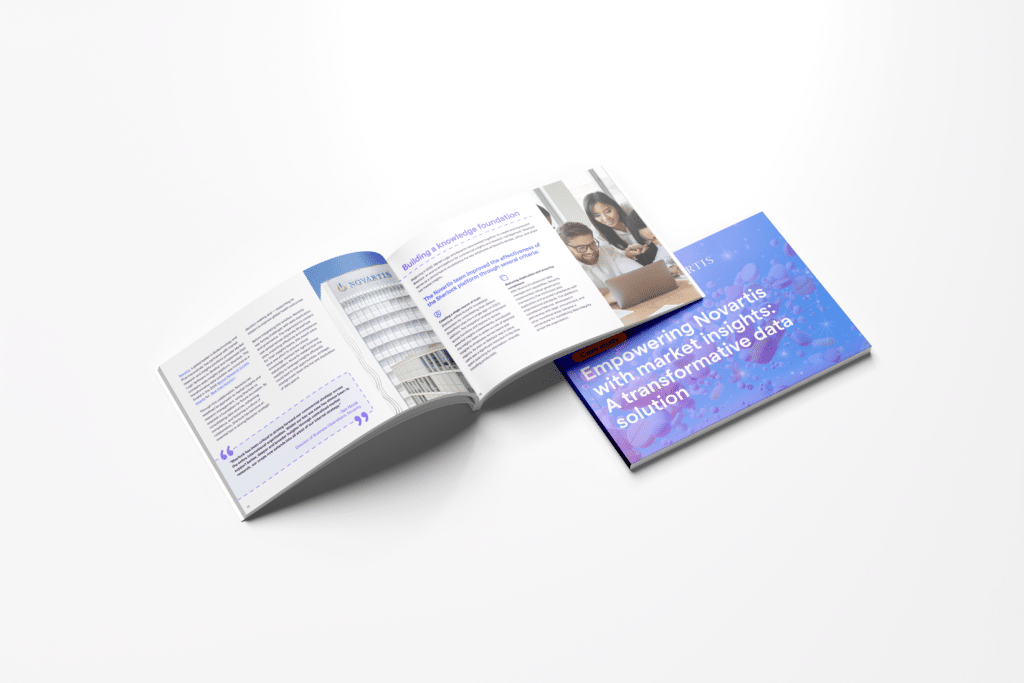
Ready to scale AI-powered insights across your organization?
While Market Logic’s three-phase change management framework provides structure, we’re always ready to adapt to your organization’s change management needs.
Request a free trial or book a personalized demo of DeepSights, so you can envision the gen AI transformation in your organization — and lead it with clarity and confidence.
More resources to help you create an insights-driven enterprise:




